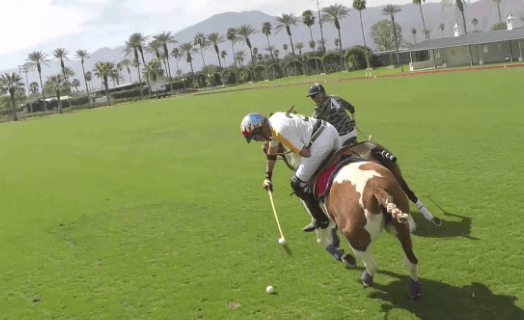What is the origin of polo?

Polo, often referred to as “the sport of kings,” has a rich and varied history that spans several continents and millennia. Here’s an exploration of its origins and evolution over time.
The Ancient Beginnings
Polo’s roots can be traced back to Persia (modern-day Iran) around 600 B.C. or earlier. Initially, it was a training game for cavalry units, particularly the King’s guard or other elite troops. To these warriors, polo simulated real-life combat and was an invaluable method of training.
Spreading Across Asia
The game spread across Asia, becoming a popular sport among the nobility in China, India, and the Byzantine Empire. Historical records from the Tang Dynasty (618-907 A.D.) in China depict polo as a favorite pastime of the imperial court. Meanwhile, in South Asia, polo flourished in the kingdom of Manipur, where it was known as ‘Sagol Kangjei’.
Polo in the Middle Ages
During the Middle Ages, polo continued to be played throughout Asia. It became particularly popular in Persia, where it evolved into a national sport. Persian literature from this era is replete with references to polo, underscoring its importance in Persian society.
The Game in Modern Times
The modern form of polo is most directly derived from Manipur, where the British tea planters discovered it in the 19th century. They adopted the game and founded the world’s first polo club in 1859 at Silchar, near the border with Bangladesh. The sport quickly spread to the West, with the first polo match in the West being played in 1876 in the United States.
Polo Today
Today, polo is played in over 80 countries worldwide. It has evolved from its military training origins to a competitive team sport enjoyed by many, irrespective of royal or aristocratic status. The sport’s global governing body, the Federation of International Polo (FIP), continues to promote and develop polo worldwide.
Polo’s journey from the ancient battlefields of Persia to the lush green fields of modern polo clubs encapsulates a fascinating blend of history, culture, and sport. Its enduring popularity testifies to the game’s intrinsic appeal and the rich traditions that continue to surround it.
What is Polo?
Polo is a team sport played on horseback, where the objective is to score goals against an opposing team. Players score by driving a small white ball into the opposing team’s goal using a long-handled mallet.
Where did Polo originate?
Polo is believed to have originated in Persia (modern-day Iran) around 600 B.C. or earlier. It was initially a training game for cavalry units.
How did Polo spread across the world?
Polo spread from Persia to other parts of Asia like China and India, and later to the West during the 19th century, particularly after being popularized by British tea planters in India.
What are the basic rules of Polo?
Polo is played by two teams of four players. The game consists of periods called chukkas, each lasting about 7 minutes. The main rule is to hit the ball into the goal, and players must follow the line of the ball to avoid collisions.
Is Polo an Olympic sport?
Polo was an Olympic sport from 1900 to 1936. It is currently not part of the Olympic Games, but there are movements to reintroduce it.
What equipment is needed to play Polo?
Essential equipment includes a polo pony, a helmet, a mallet, a ball, riding boots, knee guards, and a team jersey.
Can anyone learn to play Polo?
Yes, polo can be learned by anyone interested in the sport. It requires learning to ride a horse and handle a mallet, and many clubs offer lessons for beginners.